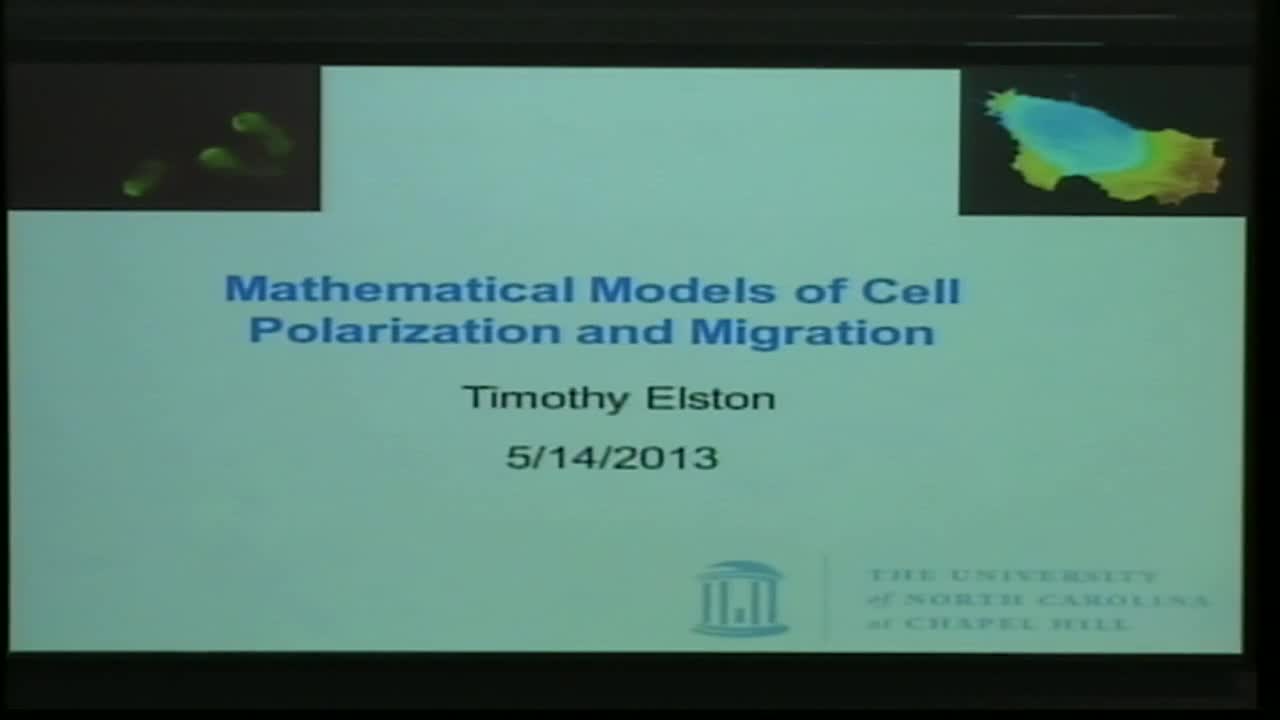Mathematical Models of Cell Polarization and Migration
Presenter
May 14, 2013
Keywords:
- Polar
MSC:
- 74A35
Abstract
Polarity establishment, the formation of a front and back, is fundamental to many cellular processes. Two examples where cell polarization plays a central role are during migration and the budding process of Saccharomyces cerevisiae (yeast). Key signaling proteins involved polarity establishment are the Rho GTPases, which act as molecular switches. We combine mathematical modeling with experimental studies to investigate the role of Rho GTPases in both budding and cell migration. During the budding process, the initial clustering of the GTPase Cdc42 is shown to be oscillatory, revealing the presence of a negative feedback loop that disperses polarity factors. We use mathematical modeling to demonstrate that negative feedback confers robustness to the polarity circuit and makes the kinetics of competition between polarity factor clusters relatively insensitive to polarity factor concentration. These predictions are confirmed experimentally. Next we combine stochastic modeling with biosenors for monitoring the spatiotemporal dynamics of Rho GTPase activity to investigate the role of RhoG in cell migration. Our analysis reveals that cells can exist in two distinct states of migration characterized by differences in speed and persistence and that RhoG plays a role in cell’s ability reorient their direction of motion.
This is joint work with:
Audrey Howell, Meng Jin, Chi-Fang Wu, Daniel Lew (yeast polarity establishment)
Richard Allen, Chris Welch, Klaus Hahn (cell migration)
